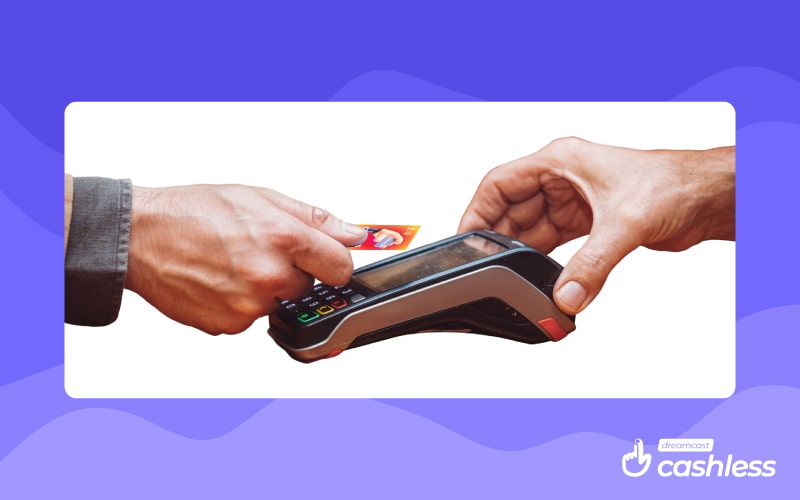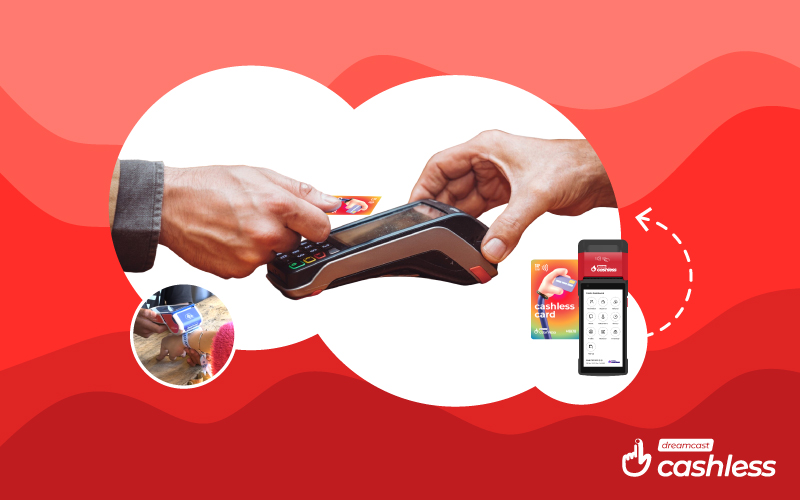The introduction of digital wallets in this modern and digital era has changed the old landscape of financial transactions. In 2022, there were 3.4 billion digital wallet users worldwide, accounting for 42.6% of the global population. The number of worldwide digital wallet users is predicted to increase by 53% by 2026, reaching 5.2 billion, or more than 60% of the global population. But, what is a digital wallet and why is it so popular?
This comprehensive guide is intended to go deeply into the substance of digital wallets, studying their definition, types, operational complexities, security mechanisms, and pros and cons of digital wallets.
Understanding Digital Wallets
What is a Digital Wallet? (Concept and Definition)

A digital wallet is a complex and versatile financial tool that resides in the digital environment and allows users to handle their financial operations safely and easily. Its primary function is that of a virtual repository, operating as a centralized hub for holding multiple types of digital currency, payment methods, and transactional data. A digital wallet, unlike its physical equivalent, is neither limited by physical space nor the requirement for traditional payment cards. Instead, it embraces the digital landscape, allowing users to engage in a wide range of financial transactions without relying on physical currency or credit cards.
Digital wallets provide customers with a dynamic and user-friendly interface for effective digital asset management and organizing. Users may conduct electronic transactions, make purchases, and transfer money all from the safety of their digital wallet.
This contemporary financial tool not only streamlines the transactional process but also improves security by utilizing powerful encryption and authentication mechanisms to protect sensitive financial information. In essence, a digital wallet is a monument to technology’s revolutionary ability to redefine how people interact with their finances by offering safe and fast access to the world of digital transactions.
Different Types of Digital Wallets
Closed Wallet
Closed wallets are a private solution to digital transactions that are strictly managed by a single company or group. Users of these proprietary systems are limited to transactions inside a preset network or with associated partners. This restricted environment provides increased security and frequently promotes a more smooth and integrated user experience. Closed wallet users are often engaged in a tightly managed environment, reaping the benefits of a more simplified and exclusive digital financial sector.
Semi-closed Wallet
Semi-closed wallets strike a fine balance between exclusivity and flexibility, allowing users to take a more fine approach to digital transactions. They allow transactions with specified merchants or enterprises, but only under defined parameters. In comparison to closed wallets, this approach provides consumers with a greater range of usage, allowing improved freedom while yet preserving a degree of control.
Open Wallet
In the world of digital transactions, open wallets are the model of versatility and freedom. Open wallet users benefit from the unique freedom of conducting transactions with any business or service that takes digital payments. These wallets overcome the limits imposed by their closed or semi-closed competitors, allowing users to transact across a wide range of services.
Open vs Closed Wallet
| Feature | Open Wallets | Closed Wallets |
| Accessibility | Users can transact with any merchant or service accepting digital payments, providing unparalleled freedom. | Limited to transactions within a specific network or with affiliated partners, offering a controlled and exclusive ecosystem. |
| Versatility | Offers the flexibility to engage in transactions across a broad spectrum of services, transcending network-specific constraints. | Transactions are confined to a particular brand or network, restricting users to a curated and limited digital space. |
| Examples | Apple Pay, Samsung Pay, various cryptocurrency wallets | Store-specific gift cards, and proprietary payment systems |
| User Base | Appeals to a wide range of users seeking diverse transaction options. | Targets users within a specific brand or network, creating a more niche and exclusive user base. |
| Flexibility | Unrestricted by network limitations, offering versatile usage scenarios. | Limited flexibility due to network constraints, particularly for users desiring broader usability. |
| Integration | Integrates with various platforms and services, promoting seamless interactions. | Integrates within a specific ecosystem, potentially limiting integration options with external services. |
| Global Transactions | Allows transactions globally without the need for currency conversion. | Transactions may be confined to a specific region or network, restricting global transaction capabilities. |
| Adoption Rate | Generally higher due to broader usability and compatibility. | May have a more niche adoption rate, particularly if tied to a specific brand or industry. |
Closed Wallet vs Semi-closed Wallet
| Feature | Closed Wallets | Semi-closed Wallets |
| Network Limitations | Transactions are limited to a specific network or affiliated partners, providing exclusivity. | Allows transactions with specific merchants or businesses, offering a balance of exclusivity and flexibility. |
| Examples | Store-specific gift cards, and proprietary payment systems. | PayPal, and Google Pay, provide versatile solutions usable across diverse platforms and merchants. |
| Flexibility | Limited flexibility due to network constraints, confining users to a curated digital space. | More flexible compared to closed wallets, allowing transactions with a broader range of merchants. |
| User Base | More niche user base due to network exclusivity. | Appeals to a broader audience seeking versatility in transaction options. |
| Integration | Integrates within a specific ecosystem, potentially limiting external integrations. | Offers integration with various platforms and services, promoting adaptability. |
| Control | Offers more control over the user experience within a curated network, potentially enhancing security. | Strikes a balance between exclusivity and flexibility, providing users with more control compared to open wallets. |
| Transaction Scope | Transactions are confined to a specific brand or network, creating a more controlled digital environment. | Allows transactions with specific merchants, but with broader usability compared to closed wallets. |
Digital Wallet Examples
- Store-specific gift cards and proprietary payment systems are examples of closed wallets. These wallets ensure that transactions are limited to a single brand or network, giving consumers a one-of-a-kind and typically loyalty-driven digital experience inside a certain ecosystem.
- Semi-closed wallets are exemplified by well-known instances such as PayPal and Google Pay. These platforms provide adaptable solutions that may be used across several platforms and merchants, finding a balance between exclusivity and broader usage.
- Open Wallet: Globally renowned choices such as Apple Pay, Samsung Pay, and different cryptocurrency wallets lead the field in open wallet solutions. These wallets enable users to transact across a wide range of services, freeing them from network-specific limits and providing a fully borderless digital financial experience.
How Do Digital Wallets Work?

To produce a user-friendly, mobile, and presumably safe payment experience, digital wallets use a variety of technologies, including mobile applications, mobile hardware devices, near-field communication (NFC), and security approaches like as tokenization. A user uses a digital wallet by entering their credit card information into the digital wallet app or website. Once the device is unlocked and the user approves the wallet, the information is encrypted and the wallet is ready for usage. The user makes a mobile payment by holding their smartphone close to the contactless terminal.
The following are the most common technologies used by digital wallets:
QR codes (Quick Response Codes):- These barcodes encode information into a black-and-white pattern that a user may access with their smartphone camera or the scanning device of their digital wallet to trigger a payment. Payment applications can encrypt data such as the transaction amount and the intended recipient. For example, with the PayPal app, a QR code may be produced that allows consumers to pay for things in-store using their PayPal accounts.
Read More:- QR Code vs RFID: Which One is Better for Events
NFC (Near Field Communication):- The Cashless payment system with NFC technology uses electromagnetic signals to let smartphones, tablets, laptop computers, and other devices communicate and transmit data while they are nearby. To connect, two devices must be within an inch and a half of each other.
MST (Magnetic Secure Transmission):- This mobile payment technology allows cellphones to make wireless payments to traditional pre-chip magnetic stripe systems as well as sophisticated no-swipe credit card terminals. It creates a magnetic signal similar to when a credit card reader’s magnetic stripe is swiped. Customers and businesses may transact securely using MST without needing to modify their equipment.
Digital Wallet Security Measures

Due to the sensitive nature of financial information in the digital environment, ensuring the security of digital transactions within digital wallets is critical. To develop a powerful defense against possible threats and weaknesses, robust security measures are carefully deployed. The use of cutting-edge encryption techniques is key to this protection. These powerful encryption technologies serve as an impenetrable wall, encapsulating customers’ financial data into complicated algorithms that are practically hard for unauthorized outsiders to understand. Advanced authentication mechanisms strengthen the security architecture of digital wallets even more.
Two-factor authentication, biometric identification, and secure login credentials are all part of a multi-layered defensive system that ensures only authorized users have access to their digital wallet accounts. Digital wallets establish a fortified environment in which users may securely engage in electronic transactions, knowing that their financial information is protected from any cyber attacks by utilizing these sophisticated security mechanisms.
The Pros and Cons of Digital Wallets
Pros of Digital Wallets
Convenience:
Digital wallets redefine convenience by providing consumers with a quick and easy way to perform transactions. The absence of actual currency or a plethora of payment cards simplifies the payment procedure, allowing consumers to make transactions more easily. Digital wallets, whether in-store, online, or peer-to-peer transactions, become a flexible tool that minimizes the effort of handling different payment methods, making financial interactions more efficient and user-friendly.
Security:
Equipped with cutting-edge encryption and authentication systems, digital wallets serve as safe havens in the digital financial world. The powerful encryption techniques used establish a strong barrier around users’ sensitive information, guaranteeing that financial transactions take place in a safe and secure environment. The combination of two-factor authentication with biometric security offers an extra layer of protection, giving consumers confidence in the security of their personal and financial information.
Loyalty Programs:
Many digital wallets go beyond transactional capabilities to include loyalty programs, which improves the user experience. Users who participate in these programs enjoy additional benefits, awards, and unique deals. This not only increases client loyalty but also turns digital wallets into platforms that actively reward users for their continuing consumption, resulting in a symbiotic connection between the user and the digital wallet provider.
Global Accessibility:
Digital wallets provide global accessibility, allowing users to conduct cross-border transactions and payments without the requirement for currency conversion. This function is especially useful for foreign travelers or persons doing cross-border transactions since it provides a simple and cost-effective solution to handle funds abroad.
Contactless Payments:
Contactless payments are supported by digital wallets, making transactions more sanitary and easy. Digital payments, which are especially essential in the context of public health issues, decrease the necessity for physical touch with payment terminals, encouraging a safer and more hygienic payment method.
Cons of Digital Wallets
Security Concerns:
Despite stringent security measures, digital wallets are not immune to security attacks. Because the cyber threat landscape is always changing, vulnerabilities may evolve. To guard against possible dangers, users must maintain continuing attention and awareness, realize the need for frequent upgrades, follow security best practices, and keep updated about developing threats.
Adoption Difficulties:
Because digital wallets are new, widespread adoption may be difficult. Some people may be hesitant due to unfamiliarity with the technology or worries about its dependability. Overcoming these adoption barriers necessitates not just user education, but also a larger societal shift toward accepting digital financial solutions. Education programs may help to debunk the myths surrounding digital wallets, as well as address user concerns and promote a more broad and confident use of this transformational financial technology.
Dependence on Technology:
Because digital wallets rely on technology, disturbances or outages in the digital infrastructure might temporarily limit access to funds. Users may suffer difficulties as a result of technical issues, device malfunctions, or network outages, emphasizing the significance of having backup payment options and being aware of potential technological restrictions.
Privacy concerns:
The usage of digital wallets necessitates the gathering and storage of user data. Privacy concerns may develop as consumers consider the extent to which their financial information is shared or used. Finding a happy medium between the convenience of digital wallets and the protection of user privacy remains a problem, mandating open rules and practices from digital wallet providers.
Read More:- Pros of Using Cashless Payment Solutions
Bottom line
Mobile wallet applications are transforming the way businesses interact with their consumers. The incorporation of an online cashless payment app has various advantages, including convenience, new acquisition opportunities, diverse income sources, and increased financial inclusion. Businesses may improve customer experiences, boost revenue growth, and access previously unexplored areas by integrating digital payment systems.
FAQs
Ans: Digital wallets provide various advantages, such as simplicity with rapid transactions, better security measures, connection with reward programs for extra bonuses, and worldwide accessibility.
Ans: Apple Pay, Google Pay, Samsung Pay, PayPal, and numerous cryptocurrency wallets are common examples of digital wallets.
Ans: Security is prioritized in digital wallets through enhanced encryption, authentication mechanisms, and safe login credentials. While security protections are excellent, users must exercise caution, such as choosing strong passwords and being wary of phishing attempts.
Ans: If you value speed and convenience, a digital wallet and cashless payment system can greatly improve your payment experience.






